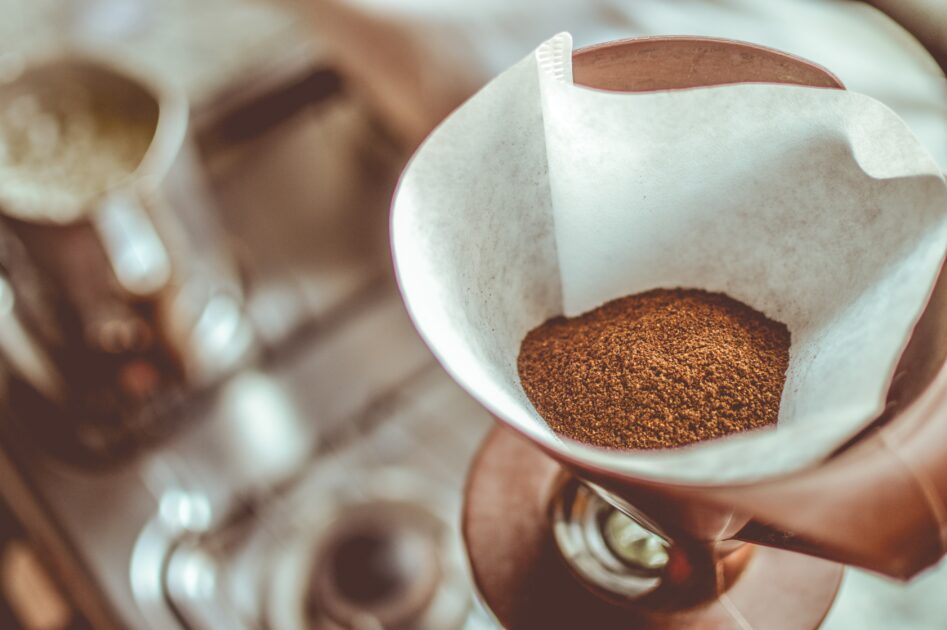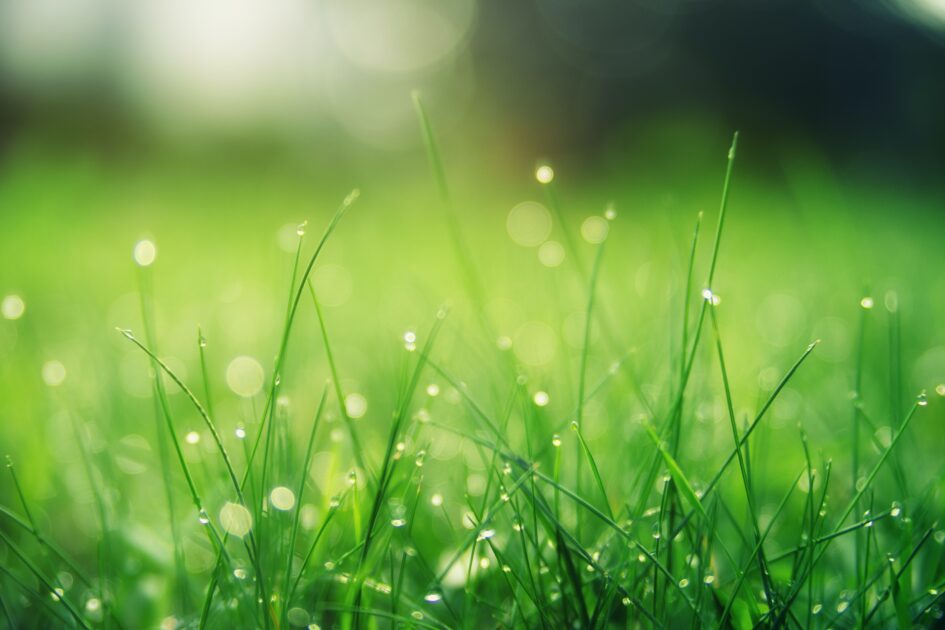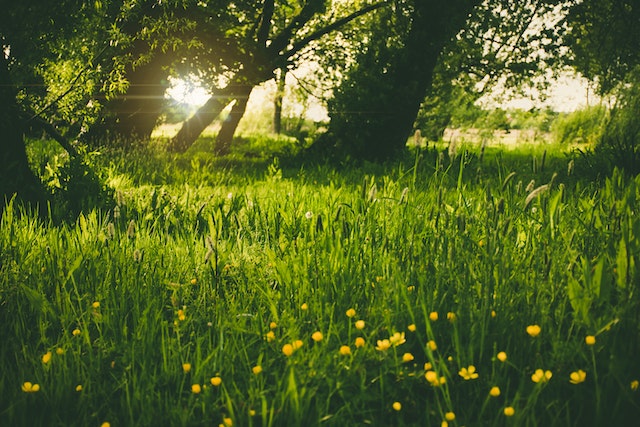If you’re like me, a daily coffee drinker with a green thumb, you’ve probably wondered, Are coffee grounds good for grass? The quick answer is yes. Coffee grounds are rich in nitrogen, a nutrient that aids in the growth of healthy, lush green lawns.
Now, let’s delve deeper into this topic. Fresh Coffee grounds don’t only provide your grass with essential nutrients but they also help improve soil structure and water retention. This compost pile can act as a natural fertilizer and even deter pests!
So next time you brew up your morning cup of Joe, don’t toss those grounds away. Your lawn will thank you!

Table of Contents
Understanding the Nutritional Value of Coffee Grounds
I’ll bet you didn’t know that your morning cup of Joe could do more than just perk you up. Yep, those leftover coffee grounds might just be a secret weapon for your lawn’s health! Let’s break it down.
First off, let’s talk nutrients. Coffee grounds are rich in nitrogen, an essential nutrient that helps grass grow lush and green. They also contain decent amounts of phosphorus and potassium which are key to healthy plant growth. Here’s a quick rundown:
| Nitrogen | High |
| Phosphorus | Medium |
| Potassium | Medium |
But wait, there’s more! Not only do coffee grounds add important nutrients back into your soil, they also improve its structure. The coarse texture of coffee grounds helps to aerate the soil allowing roots to breathe better. Plus, they enhance water retention which can be a boon during dry seasons.
The benefits don’t stop there though. Did I mention that worms love coffee too? That’s right! Earthworms seem attracted to the stuff and having them around is good news for any gardener. They help with soil health and turnover making it richer over time.
So next time you’re brewing a pot of coffee, don’t toss those grounds out! Your grass might thank you for it. And isn’t it fun finding new ways to reduce waste and help our environment? Now that’s what I call a win-win situation!
Are Coffee Grounds Beneficial for All Types of Grass?
Let’s delve into the question that’s likely been on your mind: do coffee grounds from your favorite coffee shop work as a beneficial addition for all types of lawn grass? In short, yes, but there are a few nuances to keep in mind.
Ground coffee serves as an exceptional natural fertilizer, brimming with essential nutrients such as nitrogen, calcium, and magnesium. These elements play a pivotal role in nurturing the growth and vitality of plants, including your precious lawn grass.
Nevertheless, the effectiveness of coffee grounds may vary depending on the specific type of lawn grass you’re tending to.
For example, Bentgrass or Bermuda grass tend to respond more favorably to the application of coffee grounds compared to other varieties like St. Augustine or Buffalo grass.
It’s crucial to recognize that while coffee grounds can indeed be advantageous for your lawn, they should not serve as the sole source of nourishment for your turf.
They are most effective when incorporated into a well-rounded fertilization regimen, complemented by consistent watering and proper care.
Additionally, it’s essential to consider the method of utilizing these coffee remnants on your lawn. Rather than simply scattering them directly onto your grass, which could potentially lead to a moldy mess, it’s advisable to first compost them or blend them into the soil.
The unmistakable aroma of coffee houses may be enticing, but when it comes to coffee grounds and your lawn’s health, remember to choose the right grass type and integrate them wisely into your lawn care routine.
Here’s a quick rundown:
- Bentgrass: This type thrives well on acidic soils making coffee grounds an ideal addition.
- Bermuda Grass: Adaptable in nature, this variety can also benefit from coffee ground application.
- St Augustine & Buffalo Grass: These types prefer alkaline conditions so they might not respond as well to acidic coffee grounds.
Remember though, moderation is key when using any form of fertilizer including our beloved java remnants! Too much acidity (from excessive amounts) can harm rather than help your green oasis.
In essence, if applied correctly and in moderation along with other nourishing practices such as proper watering and mowing techniques – yes indeed – those spent espresso shots can give various types of lawns a healthy boost!
Exploring the Cons: When Coffee Grounds Can Harm Grass
Now, let’s flip the coin and discuss when coffee grounds might not be so beneficial for your grass. While it’s true that coffee grounds can serve as a natural fertilizer, providing ample nutrients like nitrogen, they’re not always an all-around win for your lawn.
Firstly, coffee grounds have a distinct acidic nature. That means if your soil already leans on the acidic side, adding more acidity could inhibit grass growth rather than encouraging it. It’s essential to know your soil pH before deciding to sprinkle those leftover grounds onto your turf.
Secondly, there’s the issue of over-application. Just like too much water can drown plants, overdoing it with coffee grounds can lead to some harmful consequences. For example:
- Coffee grounds form a water-repellent crust if applied too thickly.
- They may create an impenetrable layer preventing air from reaching plant roots.
- Excess coffee ground application attracts unwanted pests like mold and fungus.
Now here’s something you probably didn’t see coming – caffeine in coffee can suppress plant growth! Yes, you heard right! Studies indicate that caffeine can hinder certain aspects of plant development including seed germination and early root growth.
Finally, uncomposted coffee grounds are devoid of some crucial nutrients that grass needs to thrive – phosphorus and potassium. Without these two vital elements present in sufficient quantities, your grass might show signs of poor health despite abundant nitrogen from coffee grounds.
While using spent coffee ground as part of lawn care routine has its perks; one must also tread cautiously considering its potential pitfalls.
Dos and Don’ts: Using Coffee Grounds as Fertilizer
So, you’re thinking of using those leftover coffee grounds to give your grass a boost? That’s not a bad idea at all! But before you start sprinkling your lawn with used coffee, let’s go over some important dos and don’ts.
Firstly, do remember that coffee beans are acidic. They’re wonderful for acid-loving plants like azaleas or blueberries. But not all grass types appreciate an acidic environment.
Cool-season grasses such as Kentucky bluegrass or perennial ryegrass might struggle if the soil becomes too acidic. Therefore, it’s recommended to balance out the pH by adding lime or wood ash along with the coffee grounds.
Secondly, don’t just dump your coffee grounds directly onto the lawn. The wet clumps can create a barrier that prevents water and air from reaching the soil beneath. Instead, dry them out before application or mix them into compost first.
Now on to another crucial point – do incorporate coffee grounds gradually into your gardening routine. If you’ve been brewing up a storm during lockdown and have bags of used coffee lying around, resist the temptation to use it all in one go! It could lead to nutrient imbalances in your soil which may harm more than help.
Lastly but certainly importantly – don’t forget that moderation is key when it comes to using any kind of fertilizer, including coffee ground ones! Too much can be harmful rather than beneficial for your plants.
- Do use coffee grounds for acid-loving plants
- Don’t dump wet clumps directly onto lawn
- Do incorporate gradually
- Don’t overload
Remember these simple tips when using this homebrewed fertilizer solution and you’ll give both your garden and those used-up beans a new lease on life!

Practical Guide to Applying Coffee Grounds on Grass
If you’re a coffee lover like me, you might find yourself with an abundance of coffee grounds. But did you know that these can actually be beneficial for your grass? Let’s dive into the practical steps to applying coffee grounds on your lawn.
First things first, it’s important to note that not all types of grass will benefit from coffee grounds. Some varieties like ryegrass and fescue thrive best in slightly acidic soil which is where coffee grounds come in handy. They naturally decrease the pH level of the soil making it more acidic.
Here’s how I typically apply my leftover coffee grounds:
- Collect used coffee grounds: After brewing my morning cup, I’ll set aside the used ground instead of throwing them out.
- Dry out the collected coffee grounds: It’s crucial they’re completely dry before application as wet ones can mold and harm your grass.
- Sprinkle over the lawn: Think of this step as feeding your lawn; sprinkle a thin layer across your yard just after mowing so they reach the roots faster.
- Water thoroughly: This helps dissolve any large clumps and allows nutrients to seep into the soil quicker.
Remember though, moderation is key! Overdoing it could lead to overly acidic soils which aren’t great for most plants or grasses.
So there you have it – my practical guide to using those extra coffee grounds for something useful rather than sticking them in the garbage bin! Your love for coffee can now extend to your lawn too.
Scientific Evidence Supporting Use of Coffee Grounds for Grass Health
I’m certain you’ve caught wind of the excitement surrounding the utilization of coffee grounds in your garden, but were you aware that scientific evidence supports it?
Scientists have established that repurposed coffee grounds can indeed promote lawn growth and contribute to an overall healthier lawn. Here’s the lowdown!
To begin with, coffee grounds are replete with organic nutrients, with nitrogen being a key ingredient crucial for plant food. Nitrogen plays a pivotal role in photosynthesis, the process by which plants convert sunlight into sustenance.
A study led by Linda Chalker-Scott at Washington State University unveiled that the incorporation of organic materials like coffee grounds into the soil can augment its nitrogen levels.
Furthermore, another advantage of incorporating coffee grounds into your lawn is their capacity to enhance soil structure.
Research published in the Journal of Environmental Management has illuminated that the utilization of used coffee grounds as compost material can markedly improve soil fertility and structure.
Here’s one more reason why you might want to contemplate this practice: scientists believe that caffeine in the repurposed coffee grounds could act as a deterrent to pests and slugs!
According to findings from the Oregon State University Extension Service, caffeine may diminish certain pest populations because it affects their nervous systems.
However, do keep in mind – moderation is of utmost importance! Excessive use of coffee grounds can lead to overly acidic soil, which can be detrimental to certain types of grasses. It’s advisable to blend them with other compost materials or apply them sparingly directly onto your lawn.
So the next time you’re savoring a cup of Joe, ponder how those leftover coffee grinds could offer a little boost to your lawn growth!
Science appears to be quite clear on this matter: when used judiciously and adequately mixed with other organic matter, used coffee grounds can emerge as an eco-friendly option for maintaining a lush, green lawn.
Alternative Uses of Used Coffee Grounds in Gardening
I’ve been digging into my love for both gardening and coffee, and I’ve stumbled upon some fascinating uses for those spent coffee grounds. Sure, you can use them to help grass grow, but there’s so much more they’re capable of!
Turns out, your flower beds are crying out for a caffeine fix just like us! Acid-loving plants such as azaleas, rhododendrons, and blueberries relish the pH balance that used coffee grounds introduce. Simply mix them into the soil around these plants to keep their acidity levels happy.
If you’re tired of pesky pests ruining your garden soil masterpiece, then I’ve got some good news for you. Sprinkling used coffee grounds around plants acts as an organic deterrent against slugs and snails. They absolutely hate crawling over this stuff!
Here’s another thing I found amazing: You know those lovely brown mushrooms popping up on your lawn? By mixing used coffee grounds into the soil where they grow, you can encourage more fungal activity – giving rise to even more fungi!
And let me tell you something else: If growing radishes is your thing (and why wouldn’t it be?), soaking seeds in cold brewed java before planting gives them a serious head start.
In essence:
- Enhance pH balance for acid-loving plants
- Boost nitrogen levels in compost bins or worm farms
- Act as an organic pest deterrent
- Encourage mushroom growth
- Aid germination process for radish seeds
Isn’t it remarkable how many ways we can put our leftover Java to work? It’s not only about grass – the whole garden can benefit from your coffee habit! So next time you brew a pot, remember, those used grounds are black gold for your green fingers.

Concluding Thoughts: Are Coffee Grounds Truly Good for Your Lawn?
So, we’ve assessed the pros and cons of using coffee grounds on your lawn. After delving into numerous studies and expert opinions, I’m here to say that yes, coffee grounds can indeed be beneficial for your grass. But like anything else in life, it’s about balance.
Coffee grounds are rich in nitrogen, a nutrient all plants need to thrive. They also improve soil structure and soil amendment and increase its ability to hold water. But there’s a catch – too much of a good thing can turn sour quickly.
If you’re not careful with the quantity you apply, you might end up doing more harm than good by creating overly acidic conditions or blocking essential air and water from reaching the grass roots.
Here’s what I recommend:
- Sprinkle used coffee grounds lightly over your lawn.
- Mix them well into the top layer of soil.
- Monitor how your grass responds over time before deciding if this practice is right for you.
Used coffee grounds contain approximately 2% nitrogen while significantly improving soil structure when applied correctly.
Here’s my final word on this: Coffee lovers who also have a green thumb can absolutely use their daily brew waste as an eco-friendly lawn supplement. It’s not just about saving money but also embracing sustainable habits that benefit our environment in big ways.
But remember – moderation is key! Don’t dump huge amounts of your leftover espresso onto your yard without considering potential consequences first.
So go ahead – give it a shot (or two) and watch how your lawn responds! In gardening as in life, sometimes the best results come from trial-and-error experimentation guided by knowledge and patience.
